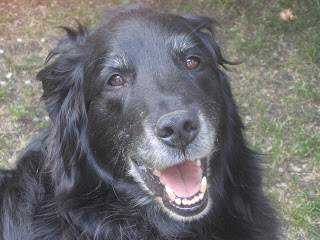.jpg) |
| sasha-sashina-Xcscr_sNSEY-unsplash |
Caged family pets highlight the emotional pain of the invasion that’s underway in Ukraine. Our family has always shared the house with pets and they’ve been sources of great joy and of gut-wrenching pain. Anyone who’s mourned the passing of their family dog will relate. Even when my mom was on her death bed, she'd eagerly share it with our yellow lab cross—inviting him to jump up and snuggle with her. Dogs have an uncanny ability to connect with human emotions.
 |
| Ukrainian Dog looking for Love & Food |
With Ukraine constantly in the headlines, I’ve been returning to my trip photos trying to figure out if the little villages I visited are under attack. So far, it appears, so good. Then I found this dog photo. Ah, yes, the yellow dog. Every time we filled up at a particular gas station, he was at our van, waiting for a cuddle and a handout. Orphaned dogs were also often hanging at the backdoors of restaurants or at bus stops. The unlucky ones ended up on the side of the road, like squirrels here in our suburbs.
 |
| Tip, our old family dog, & role model for Zenta |
My mom’s family dog inspired Zenta in my book The Kulak’s Daughter. Both my mom and aunt remembered their dog who ran after his family as they were deported during collectivization and who greeted them the following year when they made a brief return.
When I spoke to elementary school students about my research in Ukraine, one student asked if I’d found Zenta during my trip. Perhaps it was a great grand-dog of Zenta’s who greeted us at that gas station and gave me the power I needed to keep researching and writing these stories.
How many dogs will be reunited with their Ukrainian families when this current war ends? How many families will be reunited with each other? God, let it end soon. Let the broken families heal.













